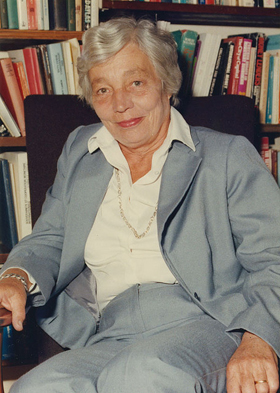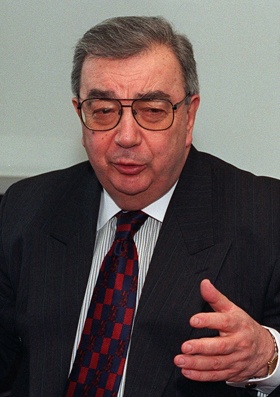What will the political map of the future be like? Often when answering this question experts are making predictions about the future of specific countries: who will be the front runner and who will be left out. A good example of such predictions is the survey of PriceWaterhouseCoopers, the results of which appear in Vittoria Puledda’s article published on the website of the Italian “La Repubblica” newspaper. It postulates that in 20 years China will become the global economic leader; the US will find itself second best, while Russia will be in the top 5 leading powers, letting India get ahead.
One can argue with these predictions. But the main problem does not seem to lie in the future ranking of different countries; it stems from the very reasoning for making such predictions. The idea of rotation of the states that hold the leading position is nothing new. It was vividly formulated by Paul Kennedy twenty-five years ago in his book “The Rise and Fall of the Great Powers” [1]. He showed, using historic examples, that global leadership of a state does not last forever: some states come to the fore, others cede their places; there is always a fall after a rise. It is difficult to argue with that in historic terms. But will this pattern be relevant in perpetuity? Or are we standing on the verge of a new global architecture where political leadership of states will not be as meaningful as it used to be?
It seems that right now we are going through a new phase of global political development. One can define it in many different ways: globalization, reorganization of the global political system, erosion of the Westphalian state system, etc. The crucial point is that the modern world is undergoing a very important transition phase in its development. The new political structure of the world is much more significant than the question of which state will hold the leading position, since in the new global political structure there may not be state leadership, or there may be leadership but not only of states.
Polycentrism of the world and the differentiation of resource potential
It goes without saying that predicting what the global political architecture will be like in 100 years from now is a complex task, if at all possible. However, some of its features can be anticipated.
Firstly, most likely the world will be polycentric. States are not the only possible centers, but also, for example, universities where new ideas will be coined and discussed and new approaches will be tested, or foundations aimed at uniting the efforts of different universities, research centers and experts.
The issue of centers was relatively simple until the middle of the 20th Century, since political, economic and ideological influence were melded and belonged to the state, the pivotal role being given to political and military leadership. The issue of economic strength becomes fairly independent starting from the second half of the 20th Century. Examples are abundant: negotiations between the most politically and militarily influential state - the US - and the Arab states in the early 1970s aimed at resolving the energy crisis; Germany and Japan being recognized among the most influential states from the political viewpoint despite their lack of military capabilities, which can be proved by the fact that they are members to the G8 and G20 (clearly their security was provided by external forces; nevertheless they could have failed to seize this opportunity to develop their economy); and many others.
Late 20th - early 21st Century Australia and New Zealand have established themselves as global leaders owing to a new, different type of resource - education. Already in the mid-1990s Australia became one of the top 5 countries (according to a number of indices) leading in internationalization of higher education. Today Australia controls 6% of the international education market [2], and the revenues from educating foreign students rank 4th in the export structure, yielding the top 3 places to the export of coal, iron ore and gold.
In other words, the differentiation of resource potential is under way and resources are not necessarily under the tight control of the state. This pattern is already evident as regards the TNCs, which are fairly independent international political actors; however, in the case of universities, mass media and other stakeholders on the international political arena, it is not yet that obvious. Yet the overall trend towards polycentrism is apparent. This being the case, interaction between states and non-state actors will intensify and their influence upon each other will grow. Therefore it is not surprising that great attention is paid today to private-public partnerships.
Furthermore, the type of connection between the centers increasingly resembles a network. In the future, direct confrontation between centers will be replaced by cooperation, competition and interaction. Nevertheless, this does not imply an “easy time” and an idyllic landscape to come. It is necessary to constantly reaffirm the status of a politically influential center in order to maintain it.
It is not the resources and structures as such, but the definition of a set of rules of interaction that matters
Secondly, it is the rules of interaction between different actors, and not the structures (organizations, centers, etc.) or resources per se, that will play a critical part in politics. Susan Strange, an English scholar, pointed this out over 15 years ago [3]. She believes that the future will be defined by how influential a participant in international cooperation is in defining the new “rules of the game”, i.e. the norms and principles that will serve as a basis for interaction.
This crucial observation can inter alia help formulate the possible Russian strategy on the international arena. Russia needs to actively participate in developing new rules, and in order to do so it is necessary to be a member of various international organizations. For example, the drawbacks to being part of the WTO can be compensated by the possibility of taking part in defining new WTO norms.
What should dialogue be like?
Thirdly, the issue in question is political dialogue, i.e. the process which will serve as a basis for elaborating and adopting the new rules of international cooperation. Clearly there are many views about what the political organization of the world should be like. The question is how to bring them into line.
Much has been said and written about political dialogue. Often the dialogue of civilizations is opposed to the clash of civilizations. And this is essentially correct. But what should future international dialogue be like? Today a monologue often basically replaces a dialogue. But an international dialogue cannot be unilateral; it is always a “two-way” process. Surprisingly enough, few scholars take notice of this fact. Even those researchers who stress the necessity of not being limited to coercive methods assume that these actions are unilateral.
For example, J. Nye, when developing his concept of “soft power”, believes that being capable of “getting others to want what you want” is very important [4]. According to Nye, this is an indirect method of exercising power. The concept of “soft power” was used, although not immediately, when shaping American foreign policy regarding Muslim countries after the 9/11 tragedy. This “soft power” seems to be aimed at “winning” the minds of moderate Muslims in the joint war against terrorism. However the main drawback of the concept (which has been heavily criticized and not always for good reasons) lies in the fact that the opposing party is considered to be always receiving the information submitted to it. Hence the main aim is to present the information in the best possible way, making it look attractive. However, real life is far from being that simple. A man who lives in an Arab country is not a “battleground” for different forces (in this case terrorist organizations on the one hand and official US representatives on the other, figuratively speaking). He is always an active party; thus it is interaction with him and not influence upon him that matters.
Several years ago Yevgeny Primakov already demonstrated this concisely in his book “A World Without Russia? Where Political Shortsightedness Leads”. He places an emphasis on dialogue with the Muslim world within the framework of the war against terrorism. This obviously refers to the dialogue with the moderate majority. Moreover, he stresses that “even during the bloody confrontations between the West and the Muslim world, the two civilizations exerted an influence on each other” [5]. This interactive dialogue will most likely serve as a foundation of the global political system in the 22nd Century.
Gradual elaboration of a new architecture and options for Russia
Fourthly, it is hardly worth presenting the global political architecture of the 22nd Century as an integral and completed construction and, therefore, predicting what its final version will be like. The project of the global political structure can only be developed gradually, in the process of defining the rules of international interaction and establishing the structures that will allows us to move in the intended direction step by step.
Predictions about the political architecture of the future are not merely abstract speculation. The future of Russia and the world at large depends on what strategy will be followed: either affirming Russia’s supremacy in all spheres (which is likely impossible) or actively participating in defining the new rules of international cooperation by taking advantage of Russia’s membership in the UNSC, G8, G20, BRICS, etc.
1. Kennedy P. The Rise and Fall of the Great Powers: Economic Change and Military Conflict from 1500 to 2000. N.Y.: Unwin Hyman Limited, 1987.
2. UNESCO. Statistical Yearbook. Paris, 1999.
3. Strange S. The Retreat of the State: The Diffusion of Power in the World Economy. Cambridge, Eng.: Cambridge University Press, 1996.
4. Nye J. The Paradox of American Power: Why the World’s Only Superpower Can’t Go It Alone. Oxford: University Press, 2002. P. 8.
5. Primakov Y. World Without Russia? Where Political Shortsightedness Leads. Moscow: Rossijskaya gazeta, 2009. P. 91







